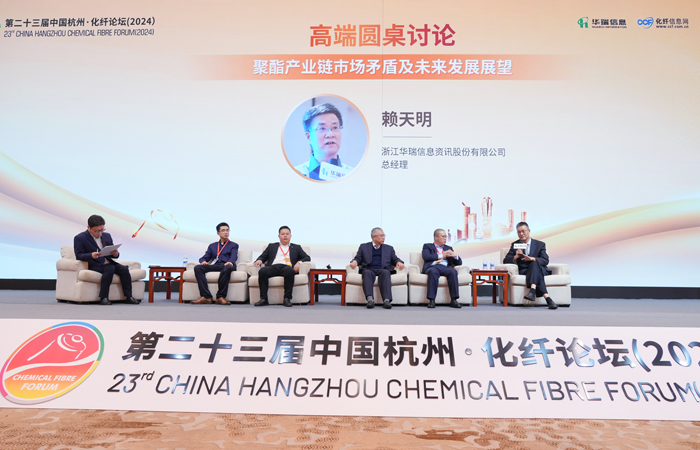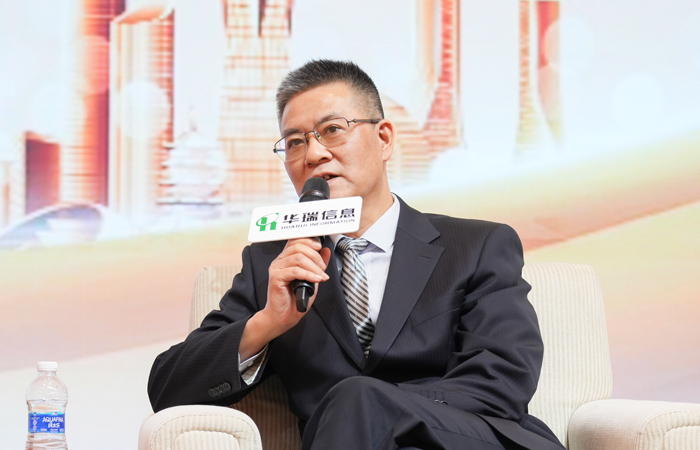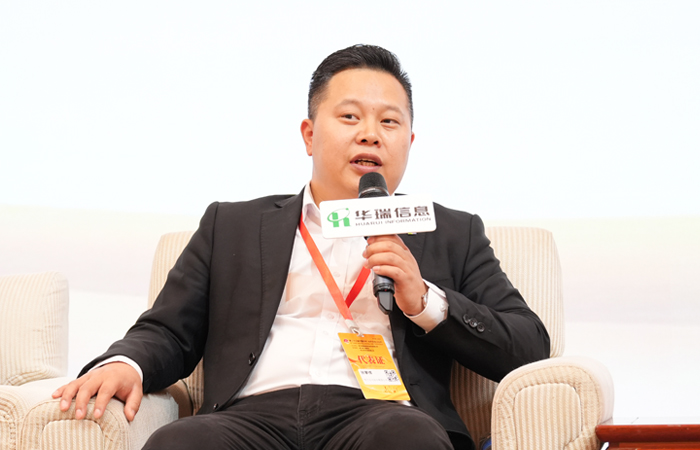High-end round table discussion: Contradiction and future development outlook on polyester industrial chain
——Host:Gao Jianjiang, Deputy General Manager, CCFGroup
High-end round table discussion: Contradiction and future development outlook on polyester industrial chain

Lai Tianming, General Manager, CCFGroup

Gao Jianjiang, Deputy General Manager, CCFGroup

Chen Canzhong, Wankai New Materials Co., Ltd.

Zhang Panhui, Hengli Petrochemical (Dalian) Co., Ltd./ Hengli Petrochemical (Huizhou) Co., Ltd.

Liu Dewei, Xiamen ITG Petrochemical Co., Ltd.
Q1: What are the reasons for the deviation between the PX price trend and market expectations?
A1: On one hand, it's supply and demand - originally there were no expected new PX capacity additions, while there was new PTA capacity planned. However, the new 2024 PTA capacity has not come online yet. On the other hand, there is clear seasonality in naphtha cracking economics, and rising PX inventories have caused price weakness. Market expectations had priced in some of this in advance, leading to a "sell-off" phenomenon with heavy trading volumes.
Q2: How does naphtha cracking demand impact PX?
A2: Naphtha cracking demand is constant - South Korea has an annual 2 million ton demand for toluene/mixed xylenes, while China exports 1-1.5 million tons. Strong US gasoline consumption doesn't drive much PX demand from China. Domestic polyester capacity is expanding rapidly, but downstream demand is lagging behind. So naphtha cracking impact takes time to filter through to PX.
Q3: What is the procurement priority between PX/PTA/MEG?
A3: PX and filament yarn have not been as strong as expected, while PET resin demand has exceeded expectations. In 2024, there is overcapacity in PET resin, which typically procures further forward. But due to low 2024 expectations, downstream pre-buying was limited. Currently PET resin spot supply is tight.
Q4: How do you evaluate PTA processing fees this year?
A4: From a cycle perspective, PTA processing fees showed a downward trend from 600 yuan/mt in 2020 to an expected 300 yuan/mt in 2024. PTA had an intensive capacity addition cycle in previous years and is heavily impacted by the PX feedstock cost. This intensive addition cycle should end by year-end 2024, so the low in processing fees should also conclude.
Q5: As a major trader, what adjustments are needed for your PTA operating strategy?
A5: PX is shifting from an import dependency to domestic balance. Operating rates in Q3/Q4 will be crucial. When processing fees are 400-500 yuan/mt, plant production is more active. But from a trader's perspective, you may need to factor in transaction volumes to gauge a reasonable fee range. Calmly assess the industry situation and aim to be ahead of producers.
Q6: How do you view the export market for PET resin?
A6: Anti-dumping duties may only temporarily shift trade flows. In the medium/long-term, stronger anti-dumping suggests China has greater pricing power in this industry. Chinese companies have sufficient capability and confidence to deal with anti-dumping measures.
Q7: What are the reasons for demand growth exceeding expectations?
A7: Post-Covid demand release. This year may see a recovery to the average of GDP+CPI growth (7-8%) - a return to normalcy. After Chinese New Year, the number of operating days over 1 million tons was noticeably lower than pre-holiday. However, exports showed year-on-year growth, while domestic demand lagged behind comparably. Additionally, policy support may face difficulties this year, and the property downcycle will importantly impact overall industry trends.





